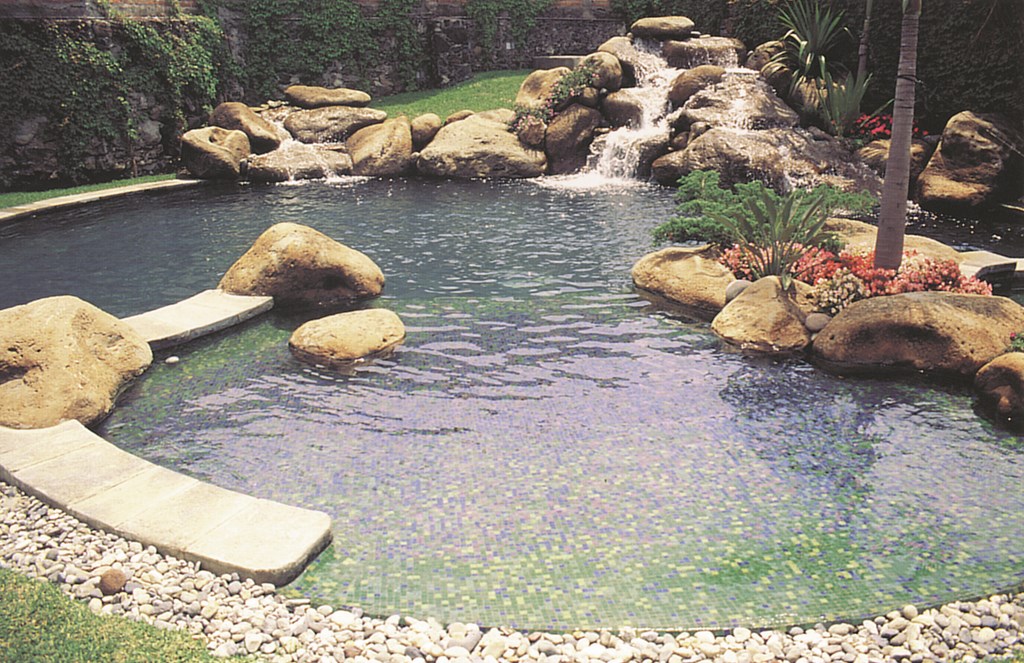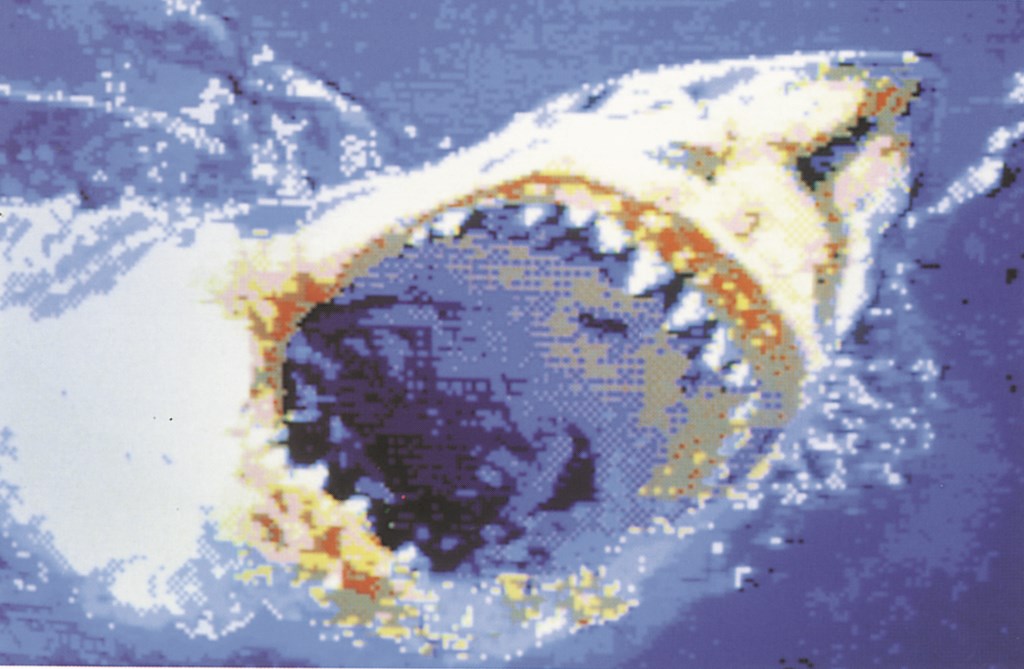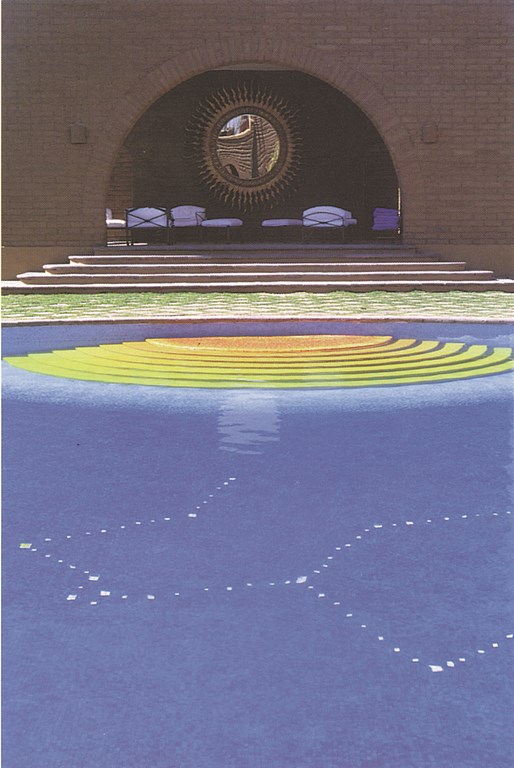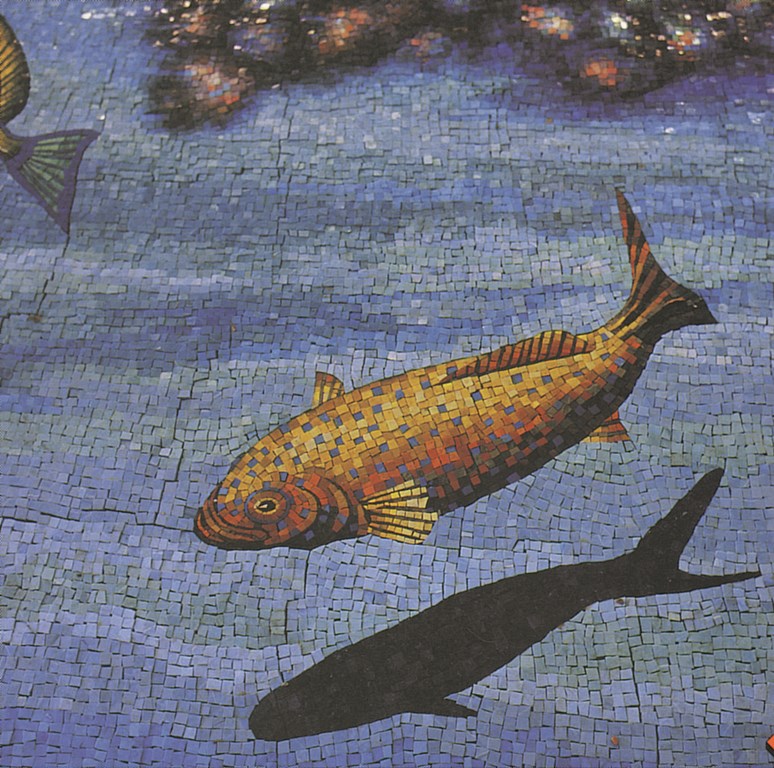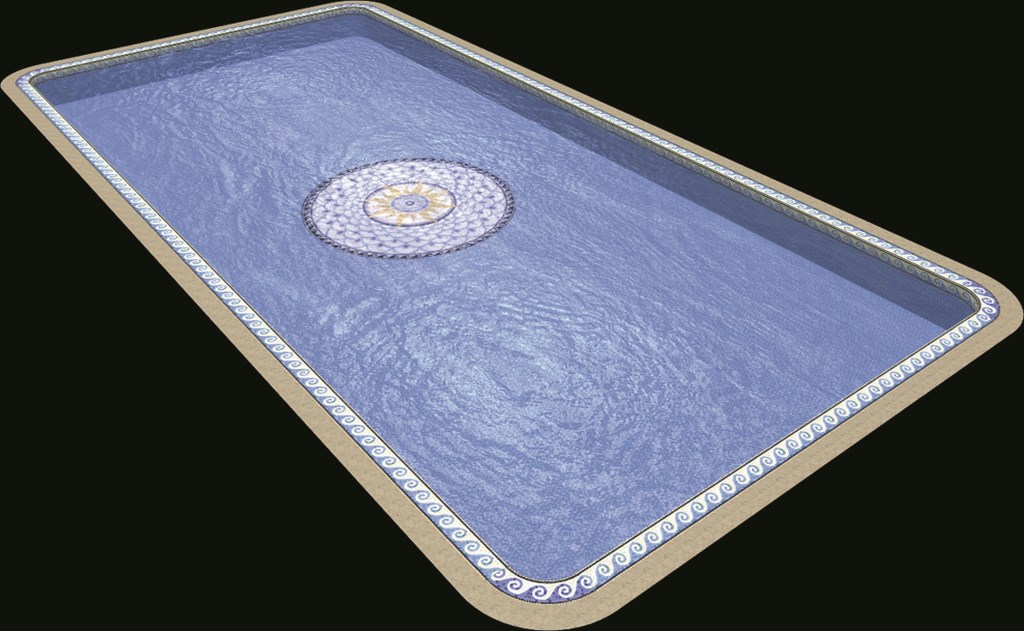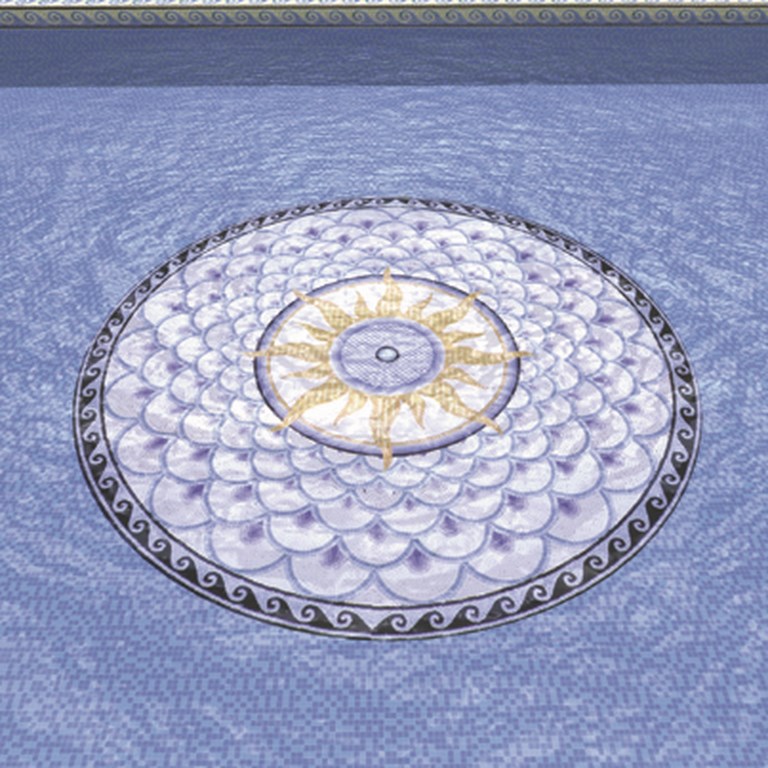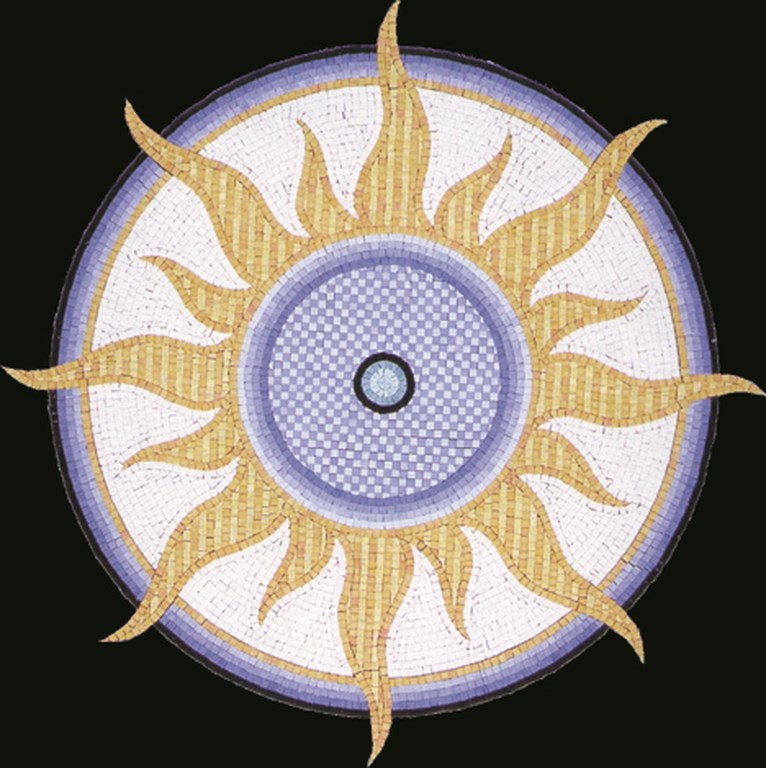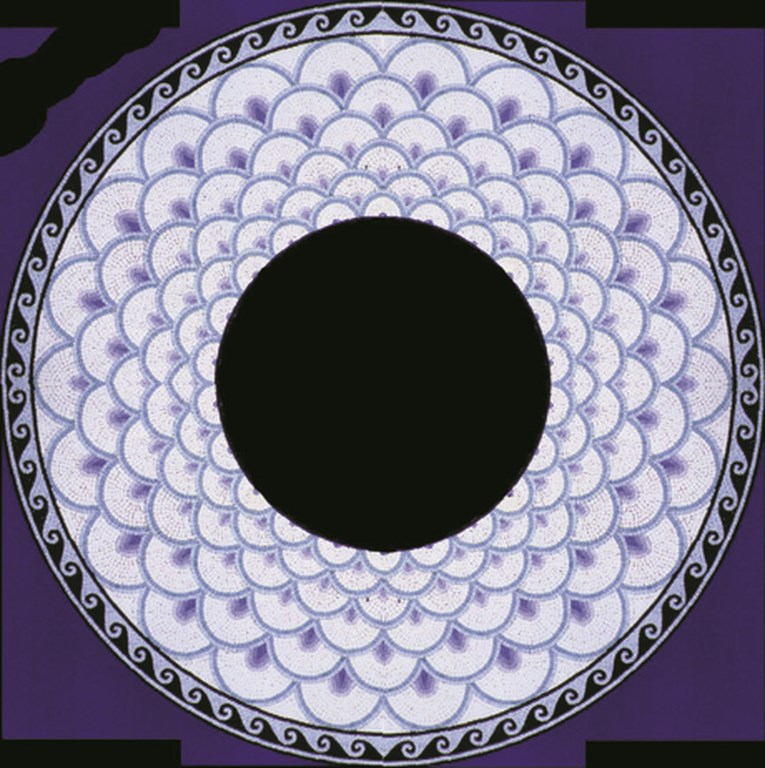A Real Glass Act
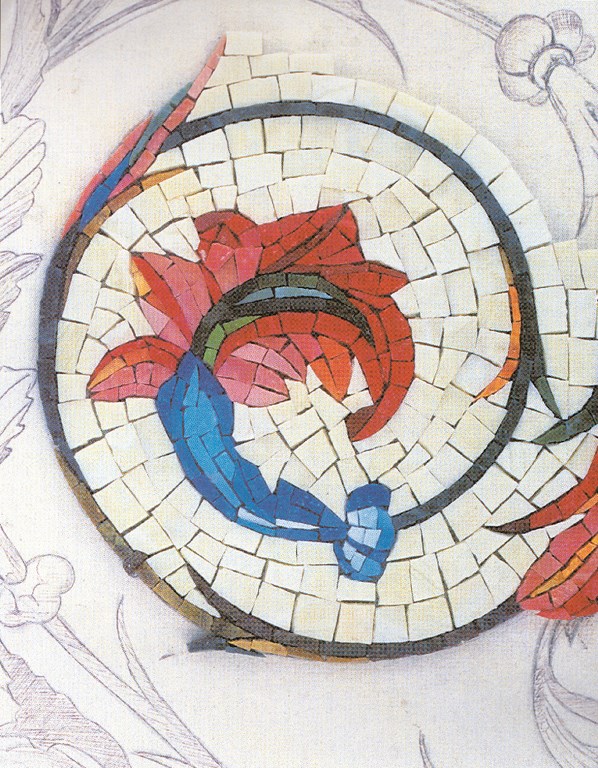
It’s an art form that connects modern craftspeople to those of the distant past.
In fact, the roots of mosaic tiling can be traced to Mesopotamia in the third millennium B.C., where temple walls were decorated with simple earthenware fragments. Centuries later, the ancient Greeks decorated their courtyards with large and small pebble mosaics, and sophisticated examples of mosaic work are found later in everything from Turkish mosques to Italian basilicas.
The Romans, however, probably pushed mosaics about as far as any culture could in the first few centuries A.D. They adorned baths, pools, spas, floors and walls of important buildings as well as humbler residences with intricate mosaics made up of ceramic, stone, glass and marble.
Recent years may have seen a revival of this ancient artistic technique, but as can be seen in the accompanying photographs, what many of today’s designers are doing with classic forms is a real step forward – a departure from tradition that has made today’s mosaics a thoroughly modern form of expression.
A VARIED PALETTE
The installer of a glass mosaic has lots of options in today’s marketplace. To help you through the basics, let me start by defining specific characteristics of available types and styles of glass:
[ ] Venetian Glass Tile. In one common form, this tile is produced in squares ranging from 3/4 of an inch to 2 inches and are paper-face-mounted on individual, foot-square sheets. These sheets are used to cover large expanses of swimming pools, spas or fountains (Figure 1).
| Figure 1: Venetian glass tile is often used as foot-square sheets to introduce a shimmering effect throughout a pool. |
More important in the context of this article, Venetian tiles also are produced in smaller, 3/8-inch squares that are ideal for use in creating either standard or custom-made figures, designs and decorative murals (Figure 2).
| Figure 2: In smaller size, Venetian glass may be used to create unique (and, as in this case, carnivorous) images and effects. |
In order to have good, clear resolution of the design, figures created using the smaller Venetian glass tiles must cover a minimum area of about six square feet. If the design is smaller than that (and therefore too small to be rendered by a computer using these tiles), then the use of Byzantine glass (see below) may be the best option.
[ ] Byzantine Glass Mosaics. Where Venetian tiles are cut square, Byzantine glass consists of irregular, hand-cut glass tiles that measure (about) 3/8-inch “square.” This is the classic material used for architectural mosaics and is generally what you see in murals, signs and custom mosaic designs (Figure 3). The size and versatility of Byzantine glass lends itself to the creation and application of intricately detailed medallions, suns, flowers, logos, borders, marine figures and the full range of custom designs.
| Figure 3: The irregular shapes and edges of Byzantine glass makes it well- suited to achieving mosaics with tight contours and sweeping curves. |
We in the mosaic business also have two classifications that have less to do with the glass used than with the fact that they are categories in which much of the business is commissioned:
[ ] Logotypes. These aren’t necessarily corporate logos (although they are often a subject for mosaics); rather, they are symbols or images that define or capture the nature of a place – a golf ball, for example, used to promote a golf club or monogrammed initials to represent a company or a person. This is a highly individualized area of the business and the list of possible applications is virtually endless.
[ ] Marine Figures. These figures are so popular in conjunction with watershapes that they bear mentioning as a category unto themselves. Colorful, attractive reef fishes and mammals, for example, are available in numerous prefabricated, pre-assembled designs (as seen in Figure 2 above), and installation is easy: The whole assembly is simply affixed to the pre-laid mortar on the watershape’s surface. Customers looking for a bit of whimsy with an aquatic feel often opt for these mosaics, which run from relatively small to rather large.
GOING CUSTOM
While many clients feel more comfortable ordering a mosaic design from a catalog, today’s suppliers also offer custom design services that can bring a mosaic of virtually any design to a watershape.
When a mosaic studio like ours at Mosaicos Venecianos de Mexico receives a drawing for a customized project (as was the case with many of the designs illustrated in this article), the work is quoted according to size, intricacy and colors.
But this isn’t just a quick sketch: To execute a mosaic, we need a true rendering that offers the client/viewer a close, initial impression of the finished mural, figure or logo that will be applied to a vessel’s surface. A good full-color rendering helps artists in the studio create a computer-generated rendering that closely mirrors the clients’ vision.
In approaching a project, everyone involved should bear in mind that the magic of mosaics is not only in the practicality and durability of the glass itself, but also in the look of the watershape as the colors, patterns and reflective sheens of the mosaic alter and enhance the contours and textures of the vessel. This is why we place so much emphasis on making the rendering as full and accurate a representation of the ultimate mosaic as possible.
As you can see in the images of Figure 3 (above) for example, the artists have been able to capture rich highlights, subtle gradations or sharp contrasts in defining edges of physical features such as steps and in making unique facets of these designs stand out. This isn’t something where you want lots of change orders: Everyone involved wants to get things right from the start!
We also can’t lose sight of the fact that the rendering helps builders and architects sell the sizzle: In itself, it creates an added value for clients that is compounded when they are offered a mosaic that fulfills their vision – and also delivers all of the practical advantages of glass tile.
There’s another benefit to the rendering process that shouldn’t be overlooked: Depending upon complexity, these custom-look renderings can be created by a builder, a designer or a graphic artist, but the inspiration usually springs from the customers’ desires. What a rendering does in this context is enable designers and clients to explore the visual sensibilities of a vessel and work through all of the details that will make the overall watershape just perfect in the clients’ eyes.
WORKING WITH THE STUDIO
The rendering sent by a builder or architect to a mosaic studio is scanned to create a digital version of the rendering. If the clients’ vision is matched by the studio’s computer rendering, the project can advance to the next stage. If the computer-generated rendering needs adjustment, it’s an opportunity for clients to get further involved in developing their vision. (See the sidebar on page 53 to see what this style of rendering entails.)
Once the final rendering is completed, our firm sends a quotation to the client and, upon approval, follows that up with a small-scale sample or section of the work. This gives clients an opportunity to see how their desires are being interpreted – and a chance to see the colors selected by our artists.
Once the sample is approved, the studio’s artists draw the design to scale on Kraft paper. Once that’s finished, the drawing is numbered and cut into jigsaw-patterned sheets approximately 15 inches square to be distributed among different artists. This division of labor is known as the studio method and involves a chronological lofting plan that will guide the installer on site.
As for installation, the art work is first set paper-side down on the floor next to the work area, with the sheets matched up to ensure that the art is complete. Now the installer simply follows the lofting plan and the supplier’s recommended installation procedures (or those of the Ceramic Tile Institute).
All of the work here, from rendering and negotiating to studio work and installation, has its price, but when completed, glass mosaics offer real value, true beauty – and a look that has endured through the centuries.
Dan L. Andrews is president of Andrews Consulting Inc. and serves as the U.S. marketing representative for Mosaicos Venecianos de Mexico. During his time with the watershaping industry, he has developed marketing and operations-improvement programs for builders and retailers and conducts seminars for professional groups on techniques for ornamenting pools and spas with glass tile. He is also widely known as a business consultant. With a specialty in visual merchandising, he has developed marketing, customer service, sales and management-training programs for a variety of firms ranging from health-care organizations to independent retailers. He has written ten books, including Bottom-Line Marketing, a how-to marketing text currently available through the National Spa & Pool Institute.











